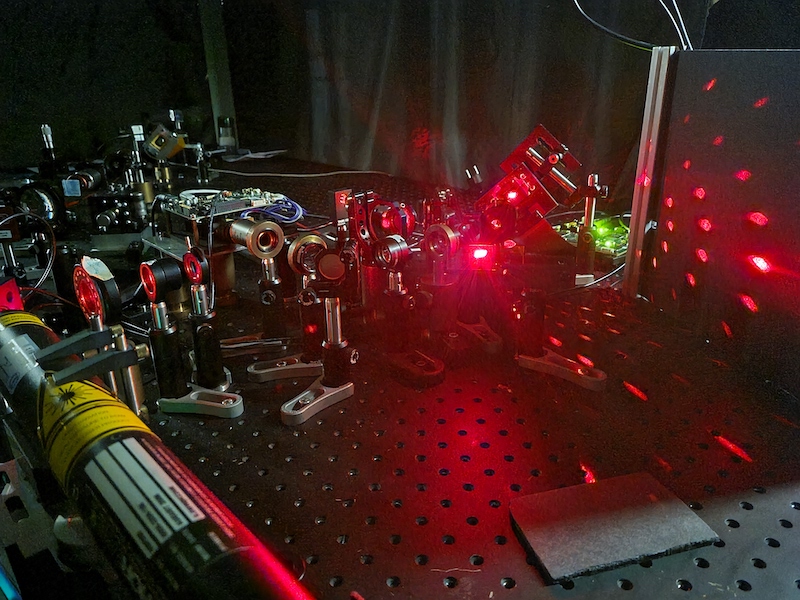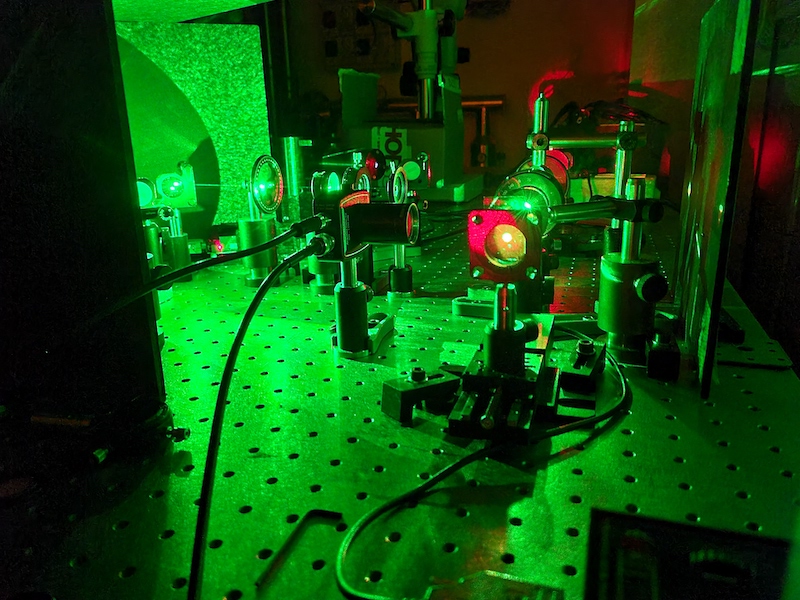Cyber physical security of complex photonic systems (CYPHER-LAB)

Experimental setup used to characterize optical-PUFs.

Experimental setup aimed to characterize optical non-linearities in complex photonics materials (Z-scan setup).
Description
Worldwide data exchange requires an increasingly reliable and secure authentication system to protect sensitive and private information. The \\\\”Cyber physical security of complex photonic systems\\\\” laboratory aims to study and manufacture Optical Physical Unclonable Functions (O-PUF) to generate cryptographic keys with a large entropic-informative content, thus overcoming the limitations of the present technologies based on electronic hardwares whose resistance to tampering is under debate due to the advent of artificial intelligence. This branch of research is called “Cyber physical security”, where the word \\\\”physical\\\\” means the intention to create physical hardware entities (tokens) that improve security, identification and authentication.
The CYPHER-LAB team characterizes the O-PUFs based on the \\\\”challenge response pairs\\\\” (CRPs) scheme, it uses an incident light beam modulated by means of \\\\”digital micro-mirror devices\\\\” (DMDs) to interrogate the O-PUFs, which produce a complex diffraction pattern with a large entropic content, called speckle pattern. A rigorous analysis exploiting the Fractional Hamming Distance (FHD) distributions metric aims to evaluate the entropy contained in each CRPs set (typically thousand bit per key) allowing the extraction of fundamental properties in order to develop new cryptographic keys.
At the CYPHER-LAB, we study the role of disorder (deterministic and non-deterministic, with more or less structural correlations) and the properties of nanostructured materials to increase the complexity and resistance of O-PUFs to machine learning attacks. Combining optical nonlinearity of the scattering potential of cryptographic primitives, this laboratory aims to establish a new, highly secure cryptographic routine taking advantage of a multidisciplinary approach that combines material science, disordered photonics and information theory.
The CYPHER-LAB of INO-CNR, located at Sesto Fiorentino, is one of the main promoters of this research in Italy. Thanks to the funding of international projects and extensive national and international collaborations, researchers are studying the fundamental mechanisms of light-matter interaction in complex photonic systems.
INO Staff
Riboli Francesco (Contact Person)Lio Giuseppe Emanuele
Personnel not belonging to INO
Sara Nocentini
Serena Salvestrini
Federico Massarelli
Federico Maestri
Giuseppe Emanuele Lio

